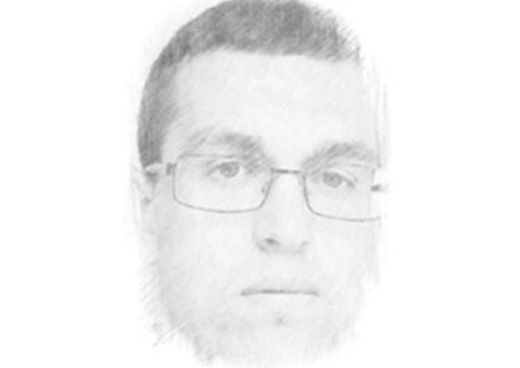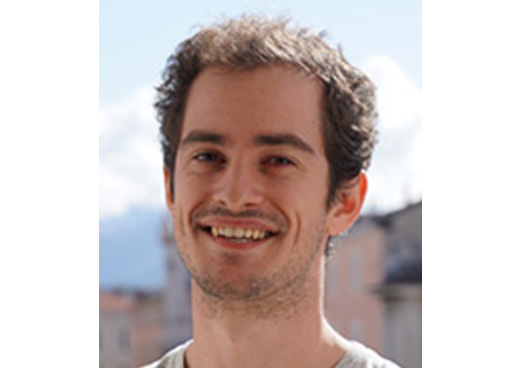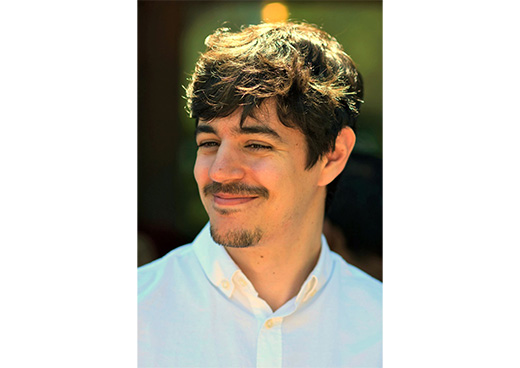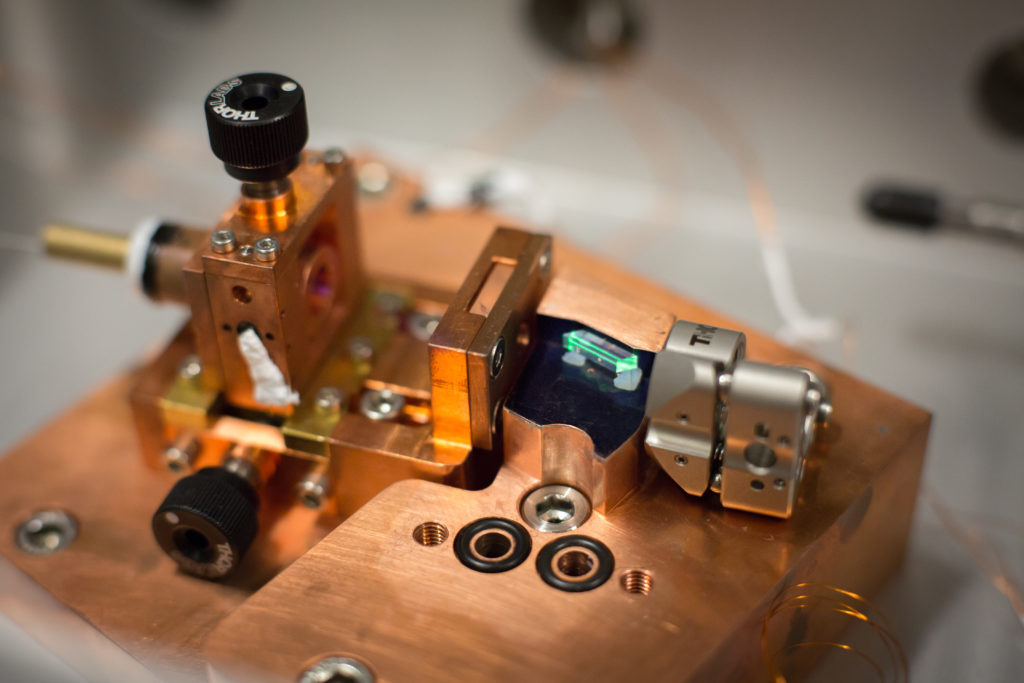- Home
- Institut Néel
- Research teams
- Technical Groups & Services
- Work at the Institut
- Partnerships
Dylan Cattiaux conducted a thesis entitled “Ultra-low temperatures microwave optomechanics for quantum sensing”, in the ULT team of Institut Néel under supervision of X. Zhou and E. Collin.
Dylan’s thesis lead to one major publication, Nat. Comm. 12, 6182 (2021), where he demonstrated for the first time the passive cooling of a full macroscopic mechanical object into its quantum ground state.
This was performed through a collaboration with the team of M. Sillanpaa (AALTO, Finland) who realised the sample: a mechanical oscillator in the shape of a drum with 10 micron diameter, which is detected through its coupling to a microwave cavity.
This system has been mounted onto the Grenoble adiabatic nuclear demagnetization, a cryostat able to reach temperatures of the order of 500 microKelvin. This result is at the core of the UGA 2022 PhD award.

The 2022 Grenoble Alpes University Thesis Prize will be awarded to Pierre Gaffuri for his work in the Interdisciplinary category.
Pierre Gaffuri’s thesis work, defended on February 5, 2021, concerns “New materials for eco-efficient white LEDs: heterostructures based on ZnO nanowires and rare-earth-free aluminoborate luminophores”, under the direction of Vincent CONSONNI, Estelle APPERT and Mathieu SALAÜN.
This thesis was realized between LMGP and Institut Néel in the framework of the CDP Eco-SESA project and combines studies on the development of devices integrating new materials to replace critical materials currently used in LEDs with a study on consumer interest for these new technological approaches carried out in partnership with the GAEL laboratory.
Congratulations Pierre!

Air Liquide wanted to benefit from the strong expertise on optics of solids which exists at Institut Néel. Hence Rémi’s thesis was organized as a CIFRE convention between the two partners with a strong financial support from the industrial in order to start the experiments. Rémi was hired in particuler because he showed a great interrest for space applications that he developped during his M2 in Toulouse.

In parallel with the conception of the experimental setup, Rémi first started a theoretical study in order to compare the laser cryocooler performances to the ones of a more « conventional » pulsed-tube cryocooler such as the one which are proposed by Air Liquide for the space satellite market. The aim of the study was to make a Size, Weight and Power (SWAP) assessment of the two systems at the satellite level for a typical earth observation mission, where the detector need to be cooled down to 150K. Rémi showed that the relatively poor cooling efficiency of a laser cooler had for consequence to use significantly more power than for a pulsed tube system. Nevertheless it allowed for gain in term of weight by up to 20% [1].
The core result of Rémi’s thesis was to conceive, mount and operate an experimental laser cooling test bench and all its instrumentation. With it, we were able to cool a YLIF4 crystal doped with Yb down to 125K, thus perfoming the first TRL3 demonstration of laser cooling in Europe [2]. The main innovation of our setup was to bring the laser power to the cold head (of the order of 10W) through an optical fiber. This evolution is necessary in the light of a future integration of the system in a satellite where it will be necessary to easily separate the laser source from the object to cool. All Rémi’s work strongly benefited from the expertise and support of the technological platforms of Institut Néel, particularly Optics and microscopy, Bulk Cristal Growth and Experimental engineering.
The outcome of Rémi’s thesis strongly reinforced the collaboration between ALAT and Institut Néel. As a proof of this success Rémi was awarded an IRGA innovation postdoctoral fellowship from UGA in order to keep working on the next step of the experiment, namely the thermal link between the cooling crystal and the thermal load. Another CIFRE funding for the PhD thesis of Enzo Joud was recently obtained. We have also enlarged the frame of our collaboration:
• at the European level with Pisa University and its spin-off Megamaterials that provide us the cooling crystals, together with a Dutch SME (Lumium) in order to answer to ESA calls
• at the local level, we are discussing with CSUG (UGA) and Lynred in order to answer to national or regional calls.
[1] Rémi Vicente et al, Cryogenics 105, 103000 (2020), DOI
[2] Rémi Vicente et al, Optics Express 30, 12929 (2022), DOI

Design: Laurent Del-Rey, Institut Néel
Production: © Julien Jarreau, Institut Néel
